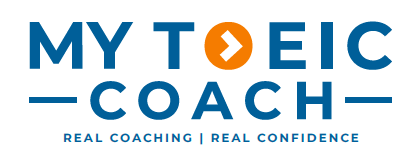Why Just Doing Practice Tests Might Be Hurting Your TOEIC Progress
🗝 Before you read:
Look at the article title and image. What do you think this article will be about?
Many students believe that taking more and more practice tests is the fastest way to improve their TOEIC score.
While practice is important, relying on full-length tests alone can lead to slower progress.
Accelerated Learning research shows that deep understanding, reflection, and focused feedback lead to better long-term results.
When students only do tests, they often repeat the same mistakes without noticing patterns. There’s no time to slow down and really fix the problem.
High scorers treat tests as diagnostics, not just practice. They ask, “Where did I lose points? Why?” Then they stop and rebuild weak areas — grammar rules, question types, or listening confusion — before continuing.
Real growth happens when you reflect, re-learn, and apply.
Practice tests should be part of the journey — not the whole thing.
📋 Understanding meaning
How well do recall and understand?
What is the main risk of relying only on practice tests?
How can students avoid repeating the same mistakes?
What does it mean to treat a test as a diagnostic?
What does ALT suggest leads to better results than testing alone?
What should students do after identifying a weak area?
Why might doing more tests actually slow your progress?
🧠 Building Vocabulary
Match the meaning word
Retain
Distraction
Ritual
multitasking
Concentrate
A .Focus
B. Routine
C. Doing many things at once
D. Remember
E. Interruption
✍️ Part 6 – Text Completion
Instructions: Choose the word or sentence that best fits the blank in the text.
Passage 1:
I finished my third practice test this week. But I didn’t stop to ______ what I missed.
A. fix
B. reflect on
C. mark
D. delete
Passage 2:
Tests are helpful, but only if you take time to ______ your mistakes.
A. ignore
B. repeat
C. review
D. count
✍️ Part 5 – Incomplete Sentences
Instructions: Choose the best answer to complete each sentence.
Students should _____ patterns in their test mistakes.
A. ignore
B. repeat
C. notice
D. guessHigh scorers don’t just test — they also _____ what went wrong.
A. reflect on
B. add up
C. skip
D. translate
✍️ Part 7 – Reading Comprehension
Reading Passage
Many TOEIC learners spend most of their time taking full tests. While this can help with stamina and timing, it’s not the most effective way to improve weak areas. ALT methods suggest using tests as tools — not goals. Every mistake is a message: it shows what needs review or practice. Students who rush from one test to another may memorize test formats but never truly fix their problems.
Instead, better learners break the test apart. They re-study parts they missed and build better habits.
They understand that the test is a mirror — not the finish line.
Questions:
What does the reading say is a benefit of testing?
A. It helps memorize grammar
B. It builds test-taking speed
C. It replaces real study
D. It avoids feedbackWhat is the danger of rushing through too many tests?
A. You won’t memorize answers
B. You’ll spend too much time writing
C. You won’t fix your weak points
D. You’ll get better slowlyWhat does the article say about mistakes?
A. They help you guess better
B. They are messages for what to improve
C. They show failure
D. They only happen in listeningWhat is a better way to use a TOEIC test?
A. As a mirror to find gaps
B. As a grammar checklist
C. As a vocabulary drill
D. As a speaking warm-up
🧠 Self-Reflection
The most important step in any lesson is not just completing the task, but making meaning from it. Take 2–3 minutes to reflect on your learning today. You don’t need perfect answers — just honest ones. This is how high performers grow.✍️ Write in a notebook, type below, or say it aloud — what matters is doing it.
How often do I practice listening each day?
What could I add to my routine to improve?
What new phrase or strategy did I learn today?
When will I practice shadowing this week?
What kind of audio will I use tomorrow?


